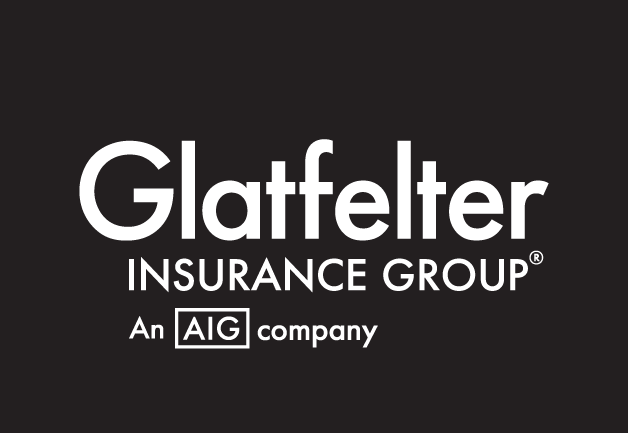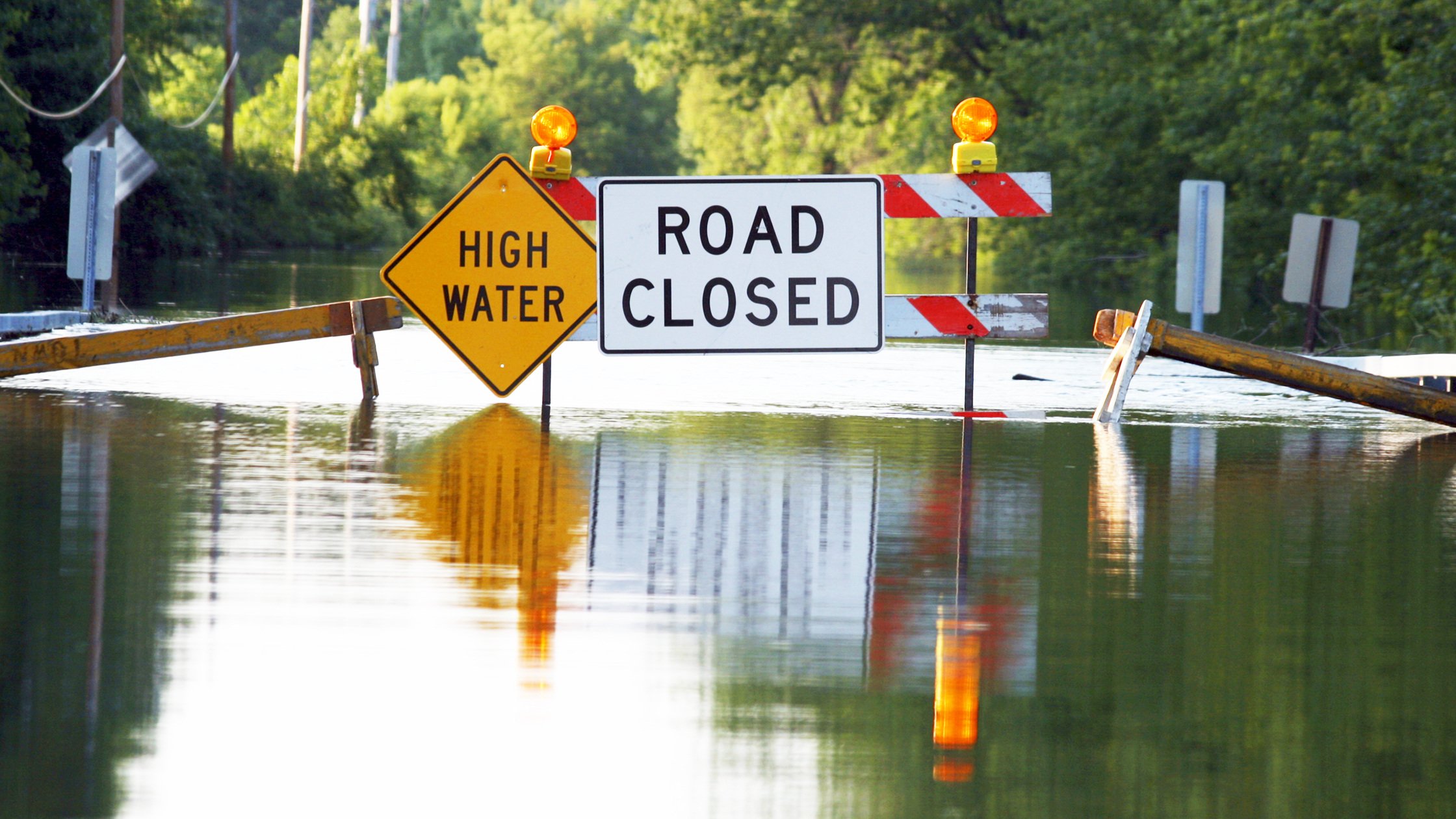Use these tips and our free resource to help minimize significant damage and disruption that can be caused by a hurricane.
What would we do without clean water? Public utilities like facilities that treat and store water bring essential services to their communities. They’re vital for providing safe drinking water, preventing disease and protecting the environment—and keeping them protected and running is crucial. With a responsibility this big, there are no off days—and even in the face of challenges that could disrupt operations, their services must keep flowing.
Each year, hurricanes have the potential to cause problems for facilities. From infrastructure damages to power outages, severe weather can bring community-wide disruption and even illness if water is contaminated. And because many pieces go into running a successful water facility, you could be exposed to a variety of unique risks when the weather takes a turn for the worst.
Never underestimate how destructive mother nature can be. Did you know about the following impacts previous hurricanes had on facilities like yours?
- In 2005, following Hurricane Katrina, it was estimated that more than 1,220 drinking water systems and more than 200 wastewater treatment facilities in Louisiana, Mississippi and Alabama had been affected.
- In 2012, there were more than 690 drinking water and wastewater utilities across 11 states and Washington D.C. that were impacted by Hurricane Sandy.
- Fast-forward to 2022—Hurricane Ian caused significant wastewater spills throughout Florida.
- For a Bradenton water treatment facility, more than 13 million gallons of partially-treated wastewater poured into the Manatee River over the course of 18 hours after rising groundwater entered through cracks in underground sewage pipes—causing filters to clog and swell the system.
- Around the same time, a backup generator at a separate lifting station failed—resulting in 4 million gallons of sewage entering Wares Creek.
- Further north, wastewater pumps around Hillsborough County began overflowing due to power outages, resulting in at least 330,000 gallons of wastewater spilling into Tampa waters over an 18-hour period of time.
To better protect yourself, it’s important to cover all of your bases and be prepared for the worst. Do you have an Emergency Response Plan implemented at your facility that covers severe weather planning and response?
Our very own Matt Olphin, Director of Client Risk Solutions for Glatfelter Public Entities, states, “Most emergency management experts will tell you that failing to plan is planning to fail. So, what are you doing to ensure that you don’t fail? Are you reviewing and revising your emergency plans regularly, training critical staff, putting an incident command structure in place and testing your plan by doing drills and conducting table top exercises with emergency management officials and first responders?”
A plan like this will be key to minimizing your exposures and keeping you out of hot water when a hurricane strikes. Don’t have one? We’ve got your back. Here are some key elements to include in your Emergency Response Plan to help you prepare for and endure a hurricane:
General tips to consider
- Identify and schedule emergency operations and cleanup crews.
- Adjust work schedules to ensure key staff members are onsite or can be reached to keep operations going if your facility remains online, or to shutdown/startup facilities if necessary.
- Notify state and federal agencies of location and numbers of the emergency personnel owner/operator.
- Review your Emergency Response Plan and ensure contacts are up-to-date.
- In the event of injury or emergencies, be sure to set up clear lines of communication with local police and fire departments.
- Establish contacts to request emergency water supply if needed (for example, a delivery of purchased water from another potable water supply).
- Plan with your local power utility to be prepared to restore power to your water system.
- Pre-arrange to purchase materials and supplies, and to borrow/lease heavy equipment that may be needed to repair water systems.
- Arrange to have materials and chemicals delivered as soon as it’s safe and you’re ready for operation.
- Establish how you’ll communicate information and press advisories to customers. Be sure to prepare customers for possible advisories as well, such as a “Boil Water Notice,” disinfection of drinking water procedures, and “Shelter-In-Place” guidelines.
- Stock up on first-aid supplies, batteries, flashlights and wireless communication devices. Be sure to check communication equipment and charge or replace batteries.
- Stock at least one week’s worth of non-perishable food and water for essential personnel remaining on-site.
- In the event that high water prevents travel, establish alternative strategies for transporting core employees to the facility.
- Ensure all essential personnel are trained to shut down and start up the system in case of emergency.
- If your plant is taken offline or you’re unable to operate the water system, notify the Emergency Management Agency (EMA) and the Water/Wastewater primary agency for your state.
- Review distribution maps to ensure they’re up-to-date with isolation valves properly identified.
Minimize risks associated with your grounds and common areas
- Inspect water system source and treatment facility for security concerns. Be sure to test backup lights and generators as well.
- Check backup pumps and controls.
- In addition to regular preventative maintenance, check backup chemical feeders, all pumps and motors. Verify spare parts are also available if needed.
- Check manual controls and oil levels.
- Fuel and service vehicles. Stock service vehicles with equipment and supplies, and temporarily move to higher ground or out of the threat of damage.
- Ensure sufficient amount of sand bags are available and place them around entrances, areas with important equipment and other critical spots.
- Ensure emergency electrical generators aren’t located in flood-prone areas.
- Board up windows and doors to minimize wind damage.
- Shut down exposed pipes at waterway crossings to avoid loss or contamination of potable water if the pipes break, and isolate portions of the water system more that are more prone to damage. This should be performed a last measure.
Tasks to complete regarding administration, lab buildings and relocation of movable assets
- Secure important records in a well-protected location.
- Remove all sensitive laboratory equipment, portable electrical equipment and small motors from flood zones.
- Protect computers from potential damage.
- Check bacteriological sampling materials and be prepared for increased or special monitoring following the storm.
- Remove or store furnishings in a safe place if possible.
- Disconnect electrical power to the water system building, workshops or offices if possible.
Better secure your treatment plant and pumping stations
- Run diagnostic tests on Supervisory Control and Data Acquisition (SCADA) and control systems.
- All pump stations should be in well-drained areas and designed to remain in operation during flood events. If not, they should be shut down and protected from electrical damage if submerged.
- Submerged wells must be disinfected before returning to service.
- Ensure all chemical bulk storage tanks are properly labeled to include chlorine cylinders and chemical mix tanks.
- All dry chemicals should be stored in a dry room that’s protected against flooding and off the floor.
- Since a storm may cause a greater demand for disinfectant, check chemical inventory to ensure that an adequate amount is available.
- Fill all storage tanks with water to prevent floating or falling from high wind.
- Remove or move chemicals to a safe area.
- Remove fuel from underground storage tanks to prevent contamination and loss. If possible, move above ground fuel storage tanks to a safe, high area.
- Remove electrical motors. If you can’t, wrap them in plastic and seal as tightly as possible.
- Remove shop tools and electrical hand tools from water system facilities.
- Monitor tank levels and fill elevated and ground storage tanks to full capacity. Storage tanks should also be valved-off from the distribution system prior to the storm to prevent loss of water.
A hurricane warning can bring a lot of uncertainty and fear—and while weather is something that is totally out of your control, you can take certain steps to give yourself the advantage. Preparing for severe weather is only half of the battle. What you do following a hurricane will greatly impact your recovery and the ability to restore operations as quickly as possible. Check out our FREE communique to learn more about the tips listed above and items to prioritize following a hurricane. Access the bulletin here.>>>

Richie Almeida, Integrated Marketing Specialist
Richie is an avid movie goer with an addiction to Sour Patch Kids. If he isn’t at the movies, he is at the gym or on a hike trying to make up for his bad eating habits.
DISCLAIMER
The information contained in this blog post is intended for educational purposes only and is not intended to replace expert advice in connection with the topics presented. Glatfelter specifically disclaims any liability for any act or omission by any person or entity in connection with the preparation, use or implementation of plans, principles, concepts or information contained in this publication.
Glatfelter does not make any representation or warranty, expressed or implied, with respect to the results obtained by the use, adherence or implementation of the material contained in this publication. The implementation of the plans, principles, concepts or materials contained in this publication is not a guarantee that you will achieve a certain desired result. It is strongly recommended that you consult with a professional advisor, architect or other expert prior to the implementation of plans, principles, concepts or materials contained in this publication.
This blog post may contain the content of third parties and links to third party websites. Third party content and websites are owned and operated by an independent party over which Glatfelter has no control. Glatfelter makes no representation, warranty, or guarantee as to the accuracy, completeness, timeliness or reliability of any third party content. References to third party services, processes, products, or other information does not constitute or imply any endorsement, sponsorship or recommendation by Glatfelter, unless expressly stated otherwise.
Related posts
While trees can bring beauty and benefits to your community, property damage or injuries could occur if you overlook their risks.
How you can help protect your most important asset: your people, and how to help them set up their insurance benefits so that they reflect their wishes.






Submit a Comment